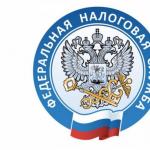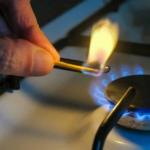Clarifications from Gazprom Mezhregiongaz Saratov LLC. Temperature coefficients when calculating gas charges by meter: what is it and how is it calculated? Clarifications from Gazprom Mezhregiongaz Saratov LLC Is it legal to take a coefficient for a gas meter?
Why is a temperature correction coefficient applied if the passport for the gas meter states that it can operate in the temperature range from -40 to + 50 degrees?
Experts from Gazprom Mezhregiongaz Orenburg LLC answer
The use of temperature correction coefficients when calculating for gas is justified by the physical laws and properties of gas (Gay-Lussac formula) and established by federal legislation, including Decree of the Government of the Russian Federation of May 6, 2011 No. 354, which approved the Rules for the provision of utility services to owners and users of premises in apartment buildings and residential buildings (clause 94 of the Rules), as well as by Decree of the Government of the Russian Federation No. 549 of July 21, 2008, which approved the Rules for the supply of gas to meet the household needs of citizens (clause 26 of the Rules). Temperature correction coefficients are applied if the subscriber's meter is not equipped with a temperature compensator (indicated in the meter passport) and the meter is installed outdoors (on the street). Temperature correction coefficients are applied to the volumes of gas consumed, which subscribers indicate monthly in their gas invoices. The operating temperature range specified in the meter passport does not affect the use or non-application of temperature correction coefficients, since it shows only the temperature limits in which the meter remains operational.
You can clearly see this by conducting an experiment with a plastic bottle yourself. An empty plastic bottle, closed with a lid, can be placed in the freezer for 15 minutes (or taken outside in winter). After that, when you take it out of the freezer, you can see that the bottle has shrunk, although no air has escaped. The same thing happens with the gas in the gas pipeline: in cold times it contracts, in hot times it expands, i.e. the gas changes its physical properties. Thus, the readings of gas meters that are not equipped with a temperature compensator require correction, which is why it became necessary to use temperature correction coefficients to accurately account for the gas consumed by the subscriber.
Gas / Gas meters
What is the temperature coefficient that is applied to the gas meter reading, in what cases is it legal to use it and can it be refused? We are publishing clarifications from Gazprom Mezhregiongaz Rostov-on-Don LLC.
Why is a “temperature coefficient” applied to gas meter readings?
The gas meter is located on the street. At one time, the work was carried out by specialists from Gorgaz, all documents are available. The technical characteristics of the meter indicate that it can operate at temperatures from -40°C to +40°C, but a calculation factor of 1.06 has been introduced. Explain where this figure came from and on what basis it was entered into the calculation scheme?
In accordance with clause 26 of the Rules for the supply of gas to meet the household needs of citizens, approved by the Decree of the Government of the Russian Federation dated July 21, 2008. No. 549, the volume of gas consumed according to the readings of a gas meter that does not have temperature compensation is determined as the difference in the readings of the gas meter at the beginning and end of the reporting period, multiplied by the temperature coefficient (coefficient of reduction to standard conditions) approved for such types of gas metering devices Federal Agency for Technical Regulation and Metrology.
Thus, when determining the amount of payment for consumed natural gas, the readings of the gas consumption meter for the billing month in order to bring the volume of gas to standard conditions are multiplied by the appropriate coefficient, and then by the retail price approved by the Regional Tariff Service of the Rostov Region.
In accordance with the technical characteristics specified in the passport of the household gas meter, the temperature parameters of the measured and ambient temperatures are set, for example, for the SGK-G4 gas flow meter from - 20°C to + 60°C. This means that the gas meter can be operated within the range determined in accordance with the technical specifications. In your case, the device can operate at temperatures from -40°C to +40°C.
The State Committee of Standards, Measures and Measuring Instruments of the USSR approved State Standard No. 2939-63 “Gases. Conditions for determining volume." This standard applies to gases and establishes conditions for determining their volume in mutual settlements with consumers.
Regardless of what technical characteristics your gas meter has, the volume of gas must be reduced to the following condition - gas temperature +20°C. Due to changes in ambient temperature, the volume of gas changes. To bring gas volumes to standard conditions when measured by meters without temperature compensation installed outdoors, temperature coefficients are used for settlements with consumers in the Rostov region.
Temperature coefficient when calculating gas consumption. Reference
The use of temperature coefficients when paying for gas using consumer metering devices without temperature compensation is provided for in clause 26 of the Government of the Russian Federation of July 21, 2008 No. 549 “On the procedure for supplying gas to meet the household needs of citizens.” Temperature coefficients for the Saratov region are approved every six months by the Federal Agency for Technical Regulation and Metrology.
According to GOST 2939-63 “Gases. Conditions for determining the volume”, the volume of gas during mutual settlements with consumers should be reduced to the following conditions: temperature 20 ° C and pressure 760 mm Hg. Art., humidity is 0.
The need to establish standard conditions to which the volume of consumed gas should be reduced when making payments to consumers is due to the natural physical properties of gas to change its volume depending on temperature and pressure.
To measure the volume of gas consumed by the population of the Rostov region, gas meters are used, both automatically bringing the gas volume to standard conditions, and meters that do not have temperature and pressure correctors.
The consumer has the right to either use a gas meter without temperature compensation and pay for the consumed volume of gas using temperature coefficients, or use a gas meter with temperature compensation and pay for gas without using temperature coefficients. In this case, the consumer can choose the type of metering device.
Temperature coefficients for bringing gas volumes to standard conditions when measured by meters without temperature compensation installed outdoors.
The volume of gas supplied to the population, municipal and industrial enterprises in accordance with GOST 2939-63 must be brought to standard conditions (gas temperature 20ºС, pressure 760 mm Hg, humidity 0%) using correction factors calculated according to the methods or automatically, when help from proofreaders.
The use of a correction factor to bring volumes of gas passed through membrane (diaphragm) meters without temperature compensation to standard conditions follows from a number of legislative acts and rules on metrology.
In accordance with Article 18 of the Federal Law of March 31, 1999 No. 69-FZ “On Gas Supply in the Russian Federation,” gas supply is carried out on the basis of an agreement between the supplier and the consumer, regardless of the form of ownership, in accordance with civil legislation and delivery rules approved by the Government of the Russian Federation and gas use in the Russian Federation. To fulfill this requirement, clause 4.3 was added to the gas supply agreement with the population, which provides for bringing gas volumes to standard conditions.
In accordance with Article 5, paragraph 1 of the Federal Law of June 26, 2008. No. 102-FZ “On ensuring the uniformity of measurements”, gas volume measurements must be carried out in accordance with duly certified methods. In pursuance of the Federal Law, FSUE VNIIMS Moscow in 2005 developed MI 2721-2005 “Standard methodology for performing measurements with membrane gas meters without temperature compensation” and, in pursuance of this methodology, the computer program “Correction of gas volume measurements”, which calculates the correction factor to bring standard conditions for the volumes of gas passing through the meter. This program “Correction of gas volume measurements” was developed specifically for use in the Stavropol Territory, taking into account its specifics and the calculation of correction factors, in accordance with the MI 2721-2005 methodology, is carried out for climatic territories on a monthly basis based on monthly average values of air temperature and barometric pressure, provided by the North Caucasus Meteorological Agency ANO for the year preceding the calculation year. The Stavropol Territory is divided into 5 zones, characterized by the altitude of the location above sea level (1 zone = from 0÷200 m, 2 zone = from 200 ÷ 400 m, 3 zone = 400 ÷ 600 m, 4 zone = 600 ÷ 800 m, 5 zone = 800 ÷ 1000 m Within the zones, a monthly correction factor is established for meters located outside the premises.
On July 21, 2008, the Government of the Russian Federation adopted Resolution No. 549 “On the procedure for supplying gas to meet the household needs of citizens”, where in the section “Basic rules for accounting for supplied gas, determining the volume of gas consumed and calculating the amount of gas fees”, paragraph 26 establishes: “The volume of gas consumed according to the readings of a gas meter that does not have temperature compensation is determined as the difference in the readings of the gas meter at the beginning and end of the reporting period, multiplied by the temperature coefficient (coefficient of reduction to standard conditions) approved for such types of gas metering devices Federal Agency for Technical Regulation and Metrology."
For settlements with consumers of the Stavropol Territory, the Federal Agency for Technical Regulation and Metrology approves the coefficients for bringing to standard conditions the volumes of gas passed through meters without temperature compensation in 5 zones of the Stavropol Territory for the 1st and 2nd half of the current year, which are sent by Gazprom Mezhregiongaz Stavropol LLC .
Gas / Gas meters
The more we are required to install metering devices, the more questions and problems ordinary citizens have. In Vladimir, for example, since March, a new line has appeared in gas receipts - “temperature coefficient”. What is it and why should we pay extra money for gas? The editors of the publication Arguments and Facts in Vladimir looked into this.
Temperature coefficient and gas meters: where does what come from?
Gazprom Mezhregiongaz Vladimir began to apply special coefficients in March. Subscribers whose meters do not have a temperature corrector and who are installed in unheated rooms or on the street received bills in which a new column appeared - “Temperature coefficient”. Where did he come from?
All physical substances, including gas, tend to compress and expand depending on the ambient temperature. If gas passes through the meter without temperature compensation, provided that the outside temperature deviates from the required 20 degrees, then it changes its physical characteristics.
And since gas consists of hydrocarbons, it expands and contracts by 3.5% for every 10 degrees. And the same newly introduced temperature coefficient allows you to compensate for the volume of gas consumed.
So the coefficient is not an invention of the Vladimir “gas workers”, it is a legislative requirement from above, it is calculated and approved by the Federal Agency for Technical Regulation and Metrology.
When calculating the coefficient, the average monthly ambient temperature in the region over the last 3 years is taken into account, so it may vary from month to month. All weather information is provided by the Department of Hydrometeorology and Environmental Monitoring.
Thus, subscribers - quite legally - received payments for March in which a new column appeared - “Temperature coefficient”. By the way, that month it was 1.1%. To determine the exact figure, it was necessary to increase our gas volumes by 10%. But who clearly and intelligibly told consumers about this? Accordingly, only a few did this - almost 100% of subscribers ignored the new requirements, so for April they are waiting for receipts with the debt.
Is it possible to install a gas meter so that it immediately takes into account the temperature?
In general, there are 2 types of meters - with and without temperature correction. The only difference is that the first option is equipped with a special tool that brings the volume of gas to standard conditions - 20 degrees Celsius and 760 mm Hg.
In total, 566.5 thousand subscribers consume gas in the Vladimir region. Of these, 190 thousand installed meters and most of them (172 thousand) installed them without a temperature corrector. More than 14 thousand families in the region have such meters on the street.
And those who have the second version of the meter and it is located on the street have 2 options: either use the temperature coefficient each time when calculating the volume of gas, or remove the meter into the house or change it to a new one - with a temperature corrector. But is the game worth the candle? Experts are sure no. After all, a new meter costs twice as much - about three thousand. And this is if you don’t take into account the installation - and that also costs money.
Gas meters and temperature coefficient: expert commentary
Svetlana Gorelova, Deputy General Director for Economics and Finance, Gazprom Mezhregiongaz Vladimir LLC:
— The right to use the temperature coefficient was established back in 2008. Vladimir begins to introduce new norms only on January 1, 2014, and such a column appeared in receipts only in March. But, since we carried out explanatory work in the first two months of the year, there will be no recount for January and February.
The gas industry of the Russian Federation is an actively developing industry that brings large profits to the treasury. Gas is needed everywhere - from small apartments to large industrial enterprises. Heating with blue fuel is much more efficient than with electricity or coal.
There are a number of legislative acts from which the application of the correction factor follows. Taking this into account, we can bring to standard criteria the volumes of blue fuel that passed through membrane meters without taking into account temperature compensation.
If the gas meter does not have a temperature compensation calculator, a temperature coefficient is used to determine the volume of gas used. Today, there is a whole calculation method that is used for outdoor equipment.
When exposed to external factors, gas can liquefy or expand by 3.5% for every 10 degrees Celsius; these data are taken into account in the calculation and make it possible to compensate for the volume of gas used.
When calculating the temperature coefficient, the average monthly air temperature in the region over the last three years is taken; indicators in different months may be different. Information on weather conditions is provided by the Department of Hydrometeorology and Environmental Monitoring.
Generally accepted standards are the air temperature outside is 20 degrees Celsius and the pressure is 760 mmHg.
The majority of gas meters among the population are counted under standard conditions; in this case, a special methodology is used, approved by the Ministry of Fuel and Energy on February 26, 2004. Based on it, six groups of coefficients (conversion or correction) are determined, aimed at adjusting the meter readings. Using coefficients, each consumer can independently calculate the amount of fuel used. The latest changes were adopted by the Agency for Technical Regulation and Metrology by order dated November 23, 2017.
The Federal Agency for Technical Regulation approves the coefficient for settlements with consumers to the established volumes of gas use that passes through meters without temperature compensation.
Resolution GOST 2939-63 determines the volume of fuel supplied to municipal and industrial institutions. It is important to correctly calculate the gas consumed in everyday life; for this you need to know the regional tariff per cubic meter.
Pricing for gas consumption
Factors influencing the price for citizens throughout Russia:
- Natural factors characteristic of the region.
- Seasonality affects pricing.
- Possible benefits for some families.
- Total amount of gas consumption.
- Use of gas based on the specified standards.
The legislation of the Russian Federation specifies standards for gas consumption. If the volume is equal to or less than the norm, the tariff will be significantly cheaper; if a large amount of fuel is consumed, the fee will significantly exceed the tariff.
An important factor when calculating tariffs is the purpose of the gas. Consumers who use blue fuel only for cooking will pay much less than those who use gas to heat their premises.
The pricing policy is justified by the fact that Russia is a large country with different climatic zones. The cost of delivering fuel to the regions also varies, which is reflected in the final price per cubic meter.

Installation of gas meters 2019
Installation of a metering device is not required; installation is carried out voluntarily at the expense of the consumer; it can be installed indoors or outdoors. A nice bonus is that it is possible not to pay the full payment, but to arrange an installment plan. The most important factor is savings, because by installing a meter, everyone will be able to control the volume of gas consumption, independently take readings and save significantly.
Installation of equipment is carried out only by an installer of the management company, after which a seal is placed. Certain gas meters have been developed for the population. They must be checked periodically.
It is important to follow the operating rules: do not open the device, do not tighten the nuts, and do not touch the seal under any circumstances; if it is damaged, the consumer will be fined.
The readings must be submitted to the supplier on a monthly basis. Taking them into account and the regional tariff, the amount of payment that the consumer must make is calculated. When making calculations, it is imperative to take into account the compensation coefficient for the influence of temperature and pressure on the gas used. This procedure can be performed automatically if the meter is equipped with a temperature compensation function.
According to experts, one person uses about twelve cubic meters of gas per month. Payments without metering equipment will be calculated based on the number of registered people, and not based on actual consumption, as in electricity or heat meters. According to the old tariffs for technical regulation and metrology, 50 rubles were paid for 10 cubic meters of fuel; after installing a metering device, the cost will drop to 1 ruble per cubic meter.
Thanks to installed meters and taking into account the temperature coefficient, the population can save significantly when paying for gas. It is important to remember that the coefficient is different in different regions and is calculated based on the natural conditions of the area.





